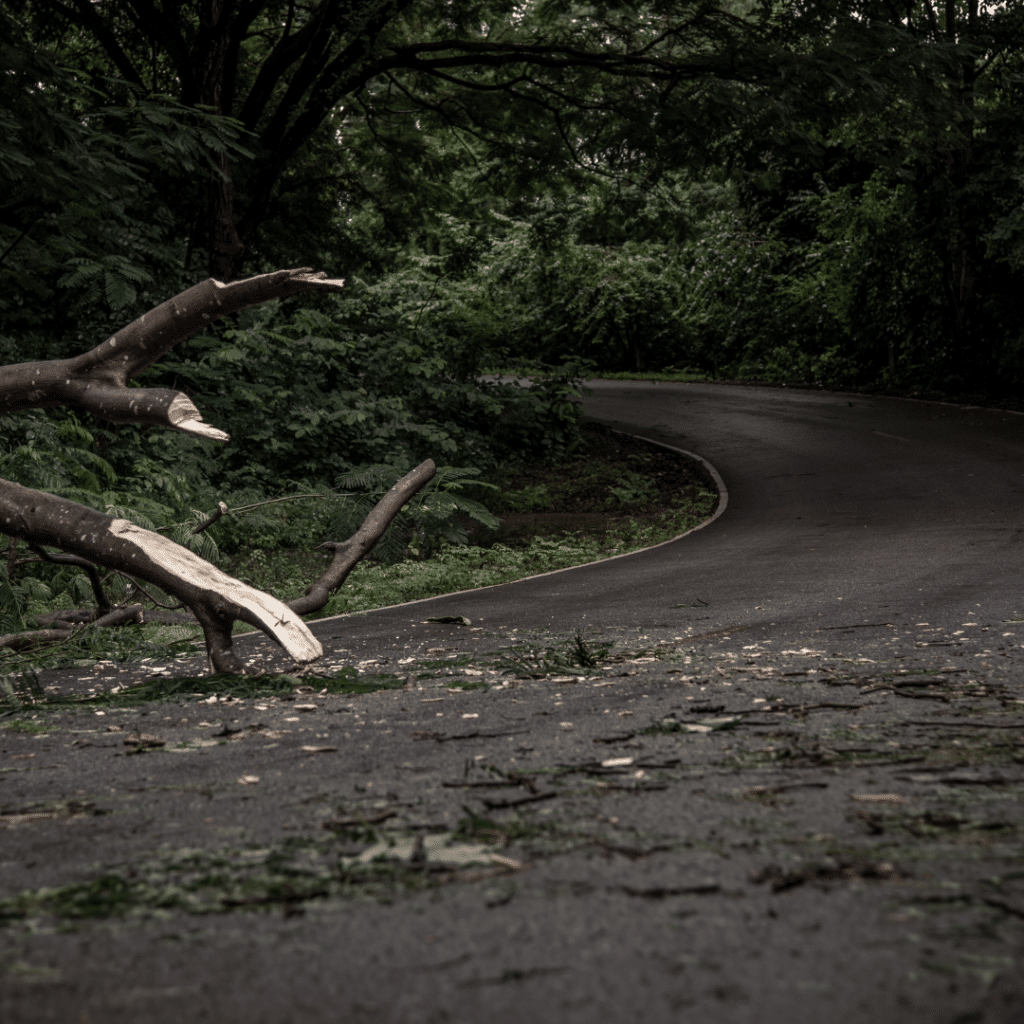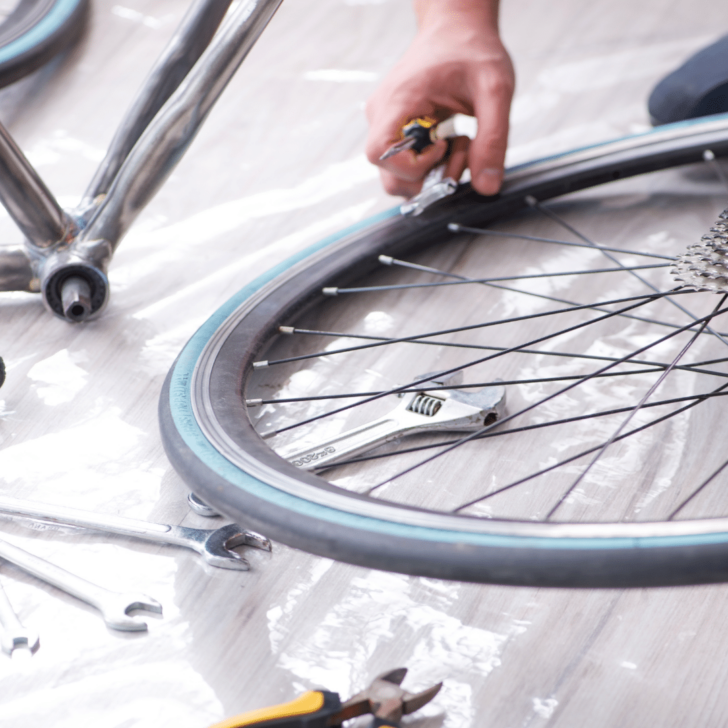This post may contain affiliate links. If you click an affiliate link and make a purchase, I may earn a commission. Also, as an Amazon Associate, I earn from qualifying purchases.--
Picture this, you fit in your tracksuit, pack your supplies, and fetch your electronic gadgets for vitals…
Everything is perfect for you to begin, and then just a few kilometers on the track, your road bike’s tire goes flat as soon as you get comfortable with your pace.
The idea of road bike tires going flat often is not something unheard of, nor is it uncommon. There are a few reasons why this occurs.
Road bike tires can go flat easily if they are used on the wrong terrain, are not inflated or installed properly, have missing parts, or if ridden through debris.
If you have been the victim of this, let us take you through the many questions you may have for dealing with it. In this blog, we will talk about various elements, factors, and aspects pertaining to road bike tires and some ways to improve their viability as well as potentially fix the issue at hand.

What are Road Bikes?
Road bikes are a variety of bikes that are primarily designed to pedal through flat roads and pavement. These do not tend to have uphill or downhill trails, nor obstacles that can act as a source of resistance. Therefore, they are designed to function in a terrain that is smooth and straight, with no challenges of any sort.
For their design, the frame and fork are typically composed of carbon or aluminum or steel, and titanium. (Source)
Traditionally, road bikes usually have a regular and flat seat, a tightly packed shape, and a slanting top tube to create a slimmer, more lightweight frame and enhance the standover height. It is important that you purchase the correct body and size frame for yourself since that really affects your experience, including reducing the chances of your bike’s tire getting punctured.
The wheels of road bikes are not designed to withstand the same strain and action that other bikes’ wheels are designed to endure.
They come with more periodic spokes connecting the hub with the rim. Occasionally, the rims have a greater depth to improve the bike’s aerodynamics, ultimately improving the bike’s riding.
Older road bikes come with very slim and slender rims. However, the newer designs have been bearing much broader rims since the latter has proven more aerodynamic. It also expands tire volume, leading to effortless rides and lesser flat tires.
Similarly, older road bike tires were composed of slim and thin tires. Still, the more recent models bear much wider tires, partially because they are more comfortable. Still, it also adds to the fact that these offer a faster riding experience to the cyclist.
To study road bikes in detail, check out this blog.
Why do Road Bike Tires go flat more easily?
Road bike tires don’t last as long as other tires such as mountain or city bike tires, mainly because they are not supposed to undergo the same wear and tear those tires endure. They give up their durability in exchange for better speed, a lighter and thinner design, and efficiency.
They should last from over 1000 to about 3000 kilometers.
Regardless, they should still offer you a long time on the road before going flat. If it is happening consistently, then something may be wrong on your part.
There can be many reasons why this is happening to you, so let’s discuss one by one each issue which can give rise to a flat tire.
1. You are Under-Inflating your Tire
Under-inflated tires are one of the most common reasons people get flat tires. The average pressure in your tires should range from 90-130 PSI, but if it is lower, your tire will be more vulnerable to pinch flats and blowouts.
To explain more on these, when you pedal your way on a tire with low pressure, you increase the chances of your inner tube getting squished between the main body of the wheel and the rim. The tube, primarily in such situations, bursts, leaving you with a flat tire.
It is most likely to occur when you come across rough terrain or hit your tires on a blunt edge. They are called pinch flats.
Moreover, they get heated up due to constant friction on the tires. This increase in temperature causes the tire tube to inflate past its limits which can lead to it getting burst. It occurs more frequently with low-pressure tires since the friction is elevated due to a greater surface area in contact with the ground. These are called blowouts.
Head up to this blog, where we study how pressure affects the tire in depth.
2. Your Tire is Overinflated
Just like low pressure is not good for your tire’s health, so is the pressure of the tire being too high. This can be best understood with the balloon analogy. When you start filling a balloon way past its limits, the “slightest” application of extra external pressure will cause it to blast.

In contrast, when inflated just the right amount, it is much more flexible and rubbery, giving it more resilience.
For basic knowledge and understanding, this is how tires work as well. Bike tire punctures can easily occur on overinflated tires going over some sharp rocks or edges.
3. You are Riding through Debris
You may be driving through debris without paying attention to whether the debris includes any sharp objects such as shards of glass or plastic, nails, rocks, or anything that can harm your tires.

Roads can be filled with all kinds of debris. Therefore, it is up to you to evade such scrap, which can puncture your tires.
4. You are using Road Bikes on the Wrong Terrain
You may be trying to do a lap on hilly terrain with a road bike. If you are doing so, then know this could negatively impact your bike tires. Road bikes are designed for flat roads and not other terrain such as rocky hills or forests. Their skinny tires make slight contact with the ground and are perfect for cadence and swiftly completing your laps.

5. Inadequate Installation
When switching a tire, you need to ensure the new tire you are putting in place is free of any defects and installed properly. An undetected error in installing a tire may cause a bigger issue and ultimately lead to flat tires. Also make sure to use proper tools for switching tires, like bike tire levers, so that the process goes smoothly and gives the best results.
6. Compromised, Absent or Misaligned Parts
There can be many issues to do with other parts of the bike that can lead up to flat tires, such as:
- Impaired valve stem – this can often cause uneven air in the tube if it breaks or malfunctions. If the tube is not retaining the correct air volume, then flat tires can occur.
- Sidewall damage – can lead to pinching flats, and should be checked for any cuts, leaks, pinching, or wear. To prevent this damage, you should look for the tube pinching out of the wheel.
- Rim strip – wraps around the corners of your inner tube and protects them. A ripped or tattered rim strip is not good enough as a medium of protection for your inner tube.
- Incorrect tires – Installing the wrong type of tire, which does not even fit or work for your bike, can cause flat tires and potentially lead to accidents and should be strictly avoided. Be sure to check that the tire you’re installing fits and matches the dimensions of your wheels.
- Incorrect tube – similarly, a tube that is not supposed to be on your bike could result in a faulty tire.
- Not enough sealant in the tubeless tire – check for the levels of latex sealant in your tubeless tire, and make sure the pressure is intact. Rule out any air bubbles or cracks in your tire; otherwise, they might burst and give you something worse than a flat tire to repair.
Fixes
1. Apply Talcum Powder
Dusting your bike tube or tire with talcum powder prior to fitting it, can assist in preventing your bike tire from going flat. Talcum powder is ideal to apply where there is a need to reduce grinding. It can stop your tube or tire from rupturing before its lifespan ends and increase its durability by reducing friction.
2. Check your Tire Pressure
As discussed earlier, under-inflated or over-inflated, either of the two, can be a reason for your frequent tire punctures. Therefore, it is important to ensure that your tire manufacturer’s recommended tire pressure is followed. This usually ranges from 90-130 PSI.
Check out this video for more information regarding optimizing your tire pressure to crank up speed but still ensure your tires remain flawless:
3. Apply Rim Tapes
Rim tapes guard your tire’s internal tube against getting punctured. They shield the tube from spoke holes that damage your inner tube by piercing it. Therefore, you must use good rim tape to prevent damage due to pinch flats.
4. Apply Tire Liner
Tire liners are slender ribbons of extruded plastic between the bike tire and its inner tube. It creates an additional coating of security for your tube. It dramatically drops the number of punctures involving your tube from road debris like glass shards, thorns, or sharp objects.
5. Examine and Maintain your Tires Regularly
While you are bound to change your tire one day, prolonging the life of your current one should also be in your best interest from the outset.
Regularly inspecting your tires for signs of damage such as bald spots, thinning, and especially punctures can give you an idea about the health and life of your tires. It allows you to revert minor damage that can be fixed without replacing the tire.
Ensure to catch minor punctures early to reduce the chances of the damage disseminating to the entire wheel; thus allowing you to avert flat tires.

6. Buy Tires from Promising Brands
If you constantly face flat tires, the problem might not be on your part, but with the tire you buy itself. A lot of times, flat tires occur due to poor quality of tires, and if your regular brand is letting you down more often, feel free to switch and try another brand.
7. Using Tubeless Tire
This new invention is a quick and easy fix to many puncture-related problems that lead to flat tires. They replace the inner tube with a latex tire sealant which fixes any minor puncture on its own before they can reduce the air pressure inside the tube. The fact that there is no tube substantially reduces the chances of punctures.
Here are the 7 fixes outlined in one image, to share with your bike friends!

Conclusion
To summarize everything, road bike tires are designed for flat roads and pavements with no obstacles or resistance. They are made to crank up speed and cadence and are not very good on irregular terrains such as forests, rocky areas, hills, and mountains.
Risk factors that can cause flat tires include:
- Abnormal pressure in the tire
- Using road bikes on the wrong terrain
- Not maintaining the bike parts appropriately
- Using the correct parts of the cycle
We can address these issues by various methods such as proper maintenance, using a tubeless tire, regularly checking bike parts and pressure in the tire, using appropriate types of equipment and fixes like tire liner and rim tapes, and using the correct brand and type of tire.
We hope this blog was helpful to you and improves your future experiences with your bike!
